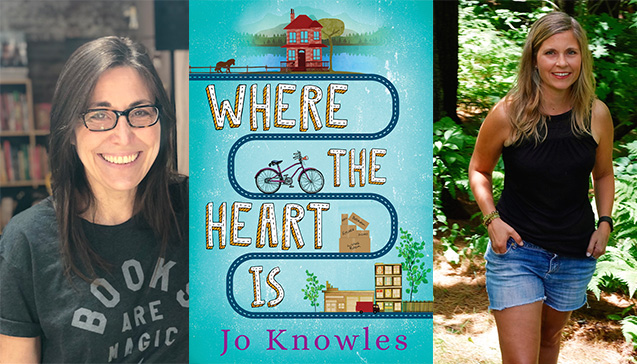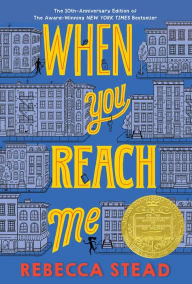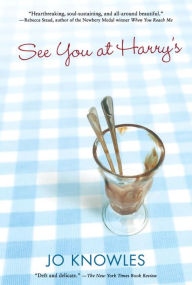Author Interview: Rebecca Stead in Conversation with Jo Knowles on Where the Heart Is

Debug Notice: No product response from API
Jo Knowles’ funny, authentic, and moving Where the Heart Is begins on Rachel’s thirteenth birthday, which is also the first day of summer, though it’s off to a rocky start. Rachel’s parents’ arguments about money are getting worse, her summer job tending to animals on a farm is a lot harder and less fun than she expected, and her best friend, Micah, seems like he wants to be more than friends, but Rachel is pretty sure she doesn’t feel the same way. Author Rebecca Stead (When You Reach Me and Goodbye Stranger) spoke with Jo Knowles about crafting stories for older middle grade readers, the tricky business of “writing what you know”, and her beautiful new book.
Jo Knowles’ funny, authentic, and moving Where the Heart Is begins on Rachel’s thirteenth birthday, which is also the first day of summer, though it’s off to a rocky start. Rachel’s parents’ arguments about money are getting worse, her summer job tending to animals on a farm is a lot harder and less fun than she expected, and her best friend, Micah, seems like he wants to be more than friends, but Rachel is pretty sure she doesn’t feel the same way. Author Rebecca Stead (When You Reach Me and Goodbye Stranger) spoke with Jo Knowles about crafting stories for older middle grade readers, the tricky business of “writing what you know”, and her beautiful new book.
Rebecca Stead: I loved Where the Heart Is. It’s a book that feels true to childhood, and, like childhood, it holds both light and dark moments. Over the course of one summer, Rachel and her family are accepting the fact that they can no longer afford to stay in their home. What was your first glimpse of this story?
Jo Knowles: The first glimpse came at a writing workshop where we were asked to describe an object that held a powerful memory. I was swept away in the memory of an old sweater I used to wear that belonged to my father. I began describing how the sweater felt and smelled, but soon fell into the memory of wearing the sweater as I walked through our empty house with my dad for the last time, after it was foreclosed on. I didn’t want to write a memoir, but I knew as I wrote that scene that I needed to tell the story.
When You Reach Me
When You Reach Me
In Stock Online
Paperback $8.99
RS: The writer David Mitchell has said, “arguably, the act of memory is an act of fiction, and much in the act of fiction draws on acts of memory.”
RS: The writer David Mitchell has said, “arguably, the act of memory is an act of fiction, and much in the act of fiction draws on acts of memory.”
JK: I often tell my students that “Write what you know” is the best and worst advice they’ll ever get. Best, because it’s true that when you write from experience, the voice feels authentic and true. Worst, because often it’s hard to let go of “what really happened” to create a successful novel. I first learned how necessary this is when I wrote See You at Harry’s, a book about grief that grew out of my own experience losing my brother. I think when writers fictionalize childhood memories they need to be willing to let go of “what really happened” while at the same time harness and hold tight to the deep emotional truth of the experience.
RS: The story opens on Rachel’s 13th birthday. I sometimes hear complaints that there aren’t enough books in this older middle-grade space, with characters who have taken some healthy steps away from childhood. Rachel, for instance, has a summer job and is thinking about her sexuality. I’ve also heard publishers say it can be a challenge to find the “right shelf” for books about young teenagers.
See You at Harry's
See You at Harry's
By Jo Knowles
Paperback $7.99
JK: I hear this too! Maybe it comes from the theory that kids tend to “read up” in age, and younger kids reading about 13 year olds is a little worrisome because they might not be ready for “sexual” content. But to write an authentic 13-year-old character, we need to acknowledge sexual feelings. It’s happening! Many kids start their periods at 11- and 12. They’re already straddling the line between childhood and adolescence, and crave books that show them what’s ahead. What safer place to do that than in a book? I recently spoke with a group of librarians who were shocked when I told them a lot of authors were under the impression we shouldn’t be writing books for this age because librarians and booksellers wouldn’t know where to shelve them. They assured me they knew, and want more!
JK: I hear this too! Maybe it comes from the theory that kids tend to “read up” in age, and younger kids reading about 13 year olds is a little worrisome because they might not be ready for “sexual” content. But to write an authentic 13-year-old character, we need to acknowledge sexual feelings. It’s happening! Many kids start their periods at 11- and 12. They’re already straddling the line between childhood and adolescence, and crave books that show them what’s ahead. What safer place to do that than in a book? I recently spoke with a group of librarians who were shocked when I told them a lot of authors were under the impression we shouldn’t be writing books for this age because librarians and booksellers wouldn’t know where to shelve them. They assured me they knew, and want more!
RS: Your novel ends with beginnings, and the promise of things that feel new and good. There’s also real sadness here—the family is facing the loss of a home they love. How important is it to you to explore sadness in your books, and the way families respond to it?
JK: In many ways, I think it’s essential. I recognize that adults want to protect kids from sad realities, but tragedies happen to all kids. Rather than pretend difficult things don’t happen, sharing stories about kids who survive them shows readers how to navigate these waters themselves, and ultimately offers them hope.
Where the Heart Is is on B&N bookshelves now.

